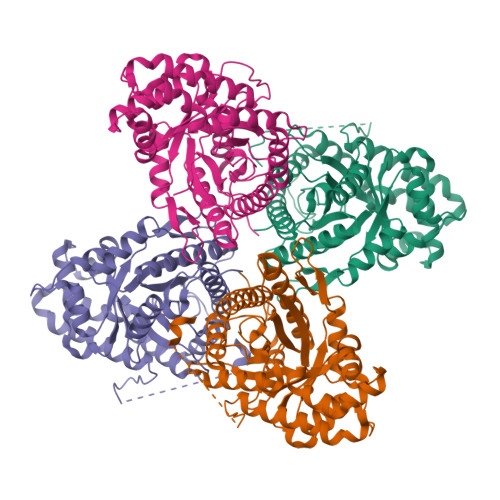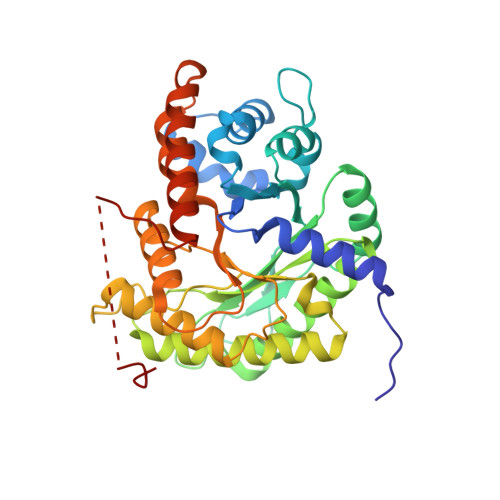Charge stabilization and entropy reduction of central lysine residues in fructose-bisphosphate aldolase
St-Jean, M., Blonski, C., Sygusch, J.(2009) Biochemistry 48: 4528-4537
- PubMed: 19354220
- DOI: https://doi.org/10.1021/bi8021558
- Primary Citation of Related Structures:
3DFN, 3DFO, 3DFP, 3DFQ, 3DFS, 3DFT - PubMed Abstract:
Fructose-1,6-bisphosphate muscle aldolase is an essential glycolytic enzyme that catalyzes reversible carbon-carbon bond formation by cleaving fructose 1,6-bisphosphate to yield dihydroxyacetone phosphate (DHAP) and d-glyceraldehyde phosphate. To elucidate the mechanistic role of conserved amino acid Asp-33, Asn-33 and Ser-33 mutants were examined by kinetic and structural analyses. The mutations significantly compromised enzymatic activity and carbanion oxidation in presence of DHAP. Detailed structural analysis demonstrated that, like native crystals, Asp-33 mutant crystals, soaked in DHAP solutions, trapped Schiff base-derived intermediates covalently attached to Lys-229. The mutant structures, however, exhibited an abridged conformational change with the helical region (34-65) flanking the active site as well as pK(a) reductions and increased side chain disorder by central lysine residues, Lys-107 and Lys-146. These changes directly affect their interaction with the C-terminal Tyr-363, consistent with the absence of active site binding by the C-terminal region in the presence of phosphate. Lys-146 pK(a) reduction and side chain disorder would further compromise charge stabilization during C-C bond cleavage and proton transfer during enamine formation. These mechanistic impediments explain diminished catalytic activity and a reduced level of carbanion oxidation and are consistent with rate-determining proton transfer observed in the Asn-33 mutant. Asp-33 reduces the entropic cost and augments the enthalpic gain during catalysis by rigidifying Lys-107 and Lys-146, stabilizing their protonated forms, and promoting a conformational change triggered by substrate or obligate product binding, which lower kinetic barriers in C-C bond cleavage and Schiff base-enamine interconversion.
Organizational Affiliation:
Déepartement de Biochimie, Université de Montréal, Québec H3C 3J7, Canada.
















